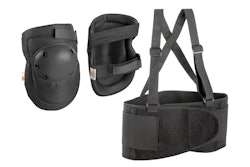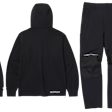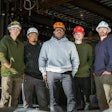
The construction industry has the highest number of struck-by deaths compared to other industries in the private industry sector. According to the U.S. Bureau of Labor Statistics, 1,069 construction workers suffered fatal work injuries in 2022.
Wearing high-visibility safety vests can help prevent injury or death.
High-visibility vests, also known as hi-vis or reflective vests, are designed to offer a measure of protection during daytime, nighttime and other low-light conditions in various working environments.
Complying with OSHA Standards for Hi-vis Vests
The Occupational Safety and Health Administration (OSHA) and the Federal Highway Administration (FHWA) have specific guidelines and standards regarding vests that encompass those issued by the International Safety Equipment Association (ISEA) and the American National Standards Institute (ANSI) in ANSI/ISEA 107-2020.
OSHA requires employers to assess workplace hazards to determine if workers need to wear Personal Protective Equipment (PPE) such as high-visibility safety vests and, if so, to provide the appropriate vest for the job at no cost to the employee.
OSHA standards require flaggers and workers exposed to public vehicular traffic in the vicinity of excavations to wear high visibility garments. Employers must train workers on the proper use, care and maintenance of hi-vis vests.
Construction workers in highway/road construction work zones also are exposed to the danger of being struck by the vehicles operating near them. OSHA’s General Duty Clause requires similar protection for them.
Also, the FHWA notes in its Worker Visibility 23 CFR Part 634 final rule the need for all workers exposed either to public traffic or to construction vehicles and equipment to wear high-visibility apparel to ‘decrease the likelihood of worker fatalities or injuries caused by motor vehicles and construction vehicles and equipment’.
The agency points out ‘high visibility is one of the most prominent needs for workers who must perform tasks near moving vehicles or equipment. The need to be seen by those who drive or operate vehicles or equipment is recognized as a critical issue for worker safety. The sooner a worker in or near the path of travel is seen, the more time the operator has to avoid an accident.’
Hi-vis Vest Classifications
This IRONRPROS story notes how the ANSI/ISEA 107-2020 standard classifies high-visibility vests according to different types – R, O and P – and classes – 1, 2 and 3 – and the level of protection each provides.
Typically, R and 0 are used by those working on construction sites; P is for first responders.
All ANSI classes of safety vests must have at least background and retroreflective/combined performance material. ANSI-approved background colors are yellow-green, orange-red and red, the latter used by first responders.
In urban environments, green may help workers stand out against a black or gray roadway.
It is considered suitable for construction sites with multifaceted backgrounds that may include heavy machinery and high-rising structures, but in a green or natural background may blend in and not provide contrast. Green has a 70 percent luminance factor, providing higher visibility and detection of the color by the eye.
Orange has a 40 percent luminance factor. It is highly visible in daylight. Orange stands out in most backgrounds and can be suitable for rural and urban areas where there is a mix of workers, vehicles and equipment.
Retroreflective material has a similar quality to bright colors in that it attracts notice by reflecting the light back. It is highly visible at night with direction lights, such as vehicle headlights. The striping is typically silver, white, or gray and is placed on the vest in an ‘H’ or ‘X’ pattern.
Contrasting tape includes high visibility striping below the reflective layer. Lime is used on orange garments; orange is used on lime garments.
Performance and Ratings
Combined performance material has retroreflective properties and meets background material fluorescent requirements. Some vests may have combined-performance striping matching the background material for optimal daytime and nighttime visibility.
Many brands now manufacture vests for women construction workers. This IRONPROS story addresses the importance of women construction workers – including pregnant workers – wearing properly-fitting hi-vis vests for safety and comfort.
A true ANSI-rated high-visibility vest bears a label noting the vest type, class, fire-resistant rating, applicable ARC rating and size and the ANSI standards it meets. Jobsite safety managers always should be consulted to help workers make the most appropriate choice for hi-vis vests.

















